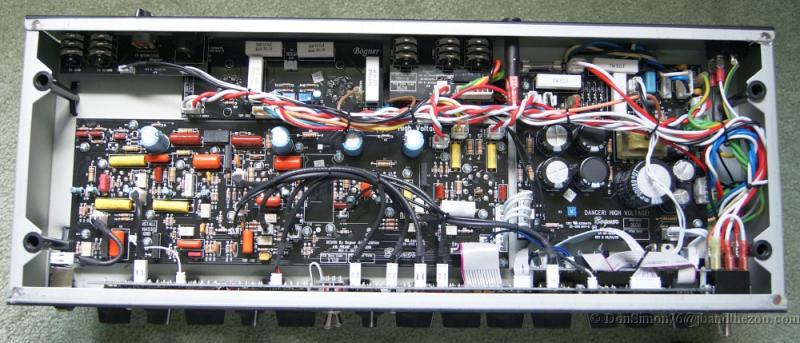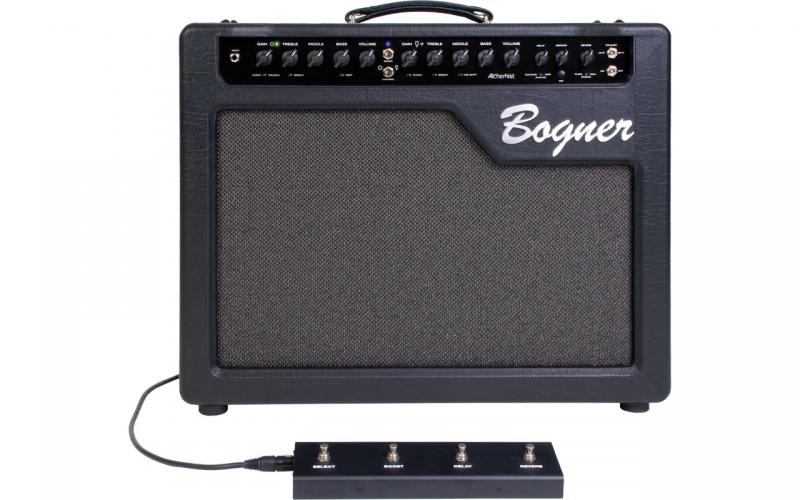Bogner Alchemist – Ultimate Sleeper Amp?

Hi-diddly do fair blog neighbors! In my first couple years of this blog, I
often featured amps that I considered “sleepers” … amps that could be bought
for fairly cheap money and deliver more than expected. I think it’s time to revive the sleeper-amp
concept! Let’s dig in with this week’s
choice, the Bogner Alchemist.
Ready? Let’s go!
I clearly remember when the Alchemists first appeared in
stores like Guitar Center, and the supporting ads in the guitar mags. Man, they really caught my attention, at over
a grand or so, they certainly were not inexpensive, but they WERE a lot less
than any other amp to bear the Bogner badge.
I’d played other Bogner models and knew they were truly top-shelf
amps. However, at the time I already had
a stable plum packed full of vintage Fender and Marshall amps and had just started
making my own glorious tube amps, so I just couldn’t justify purchasing an
Alchemist.
Fast forward to 2015.
The $1000+ Alchemists now routinely sell used for in the $400 range,
some as low as $250 to $300 … now that’s a DEAL! An Alchemist head showed up in the local
Nashville Craigslist for cheap money “or trade”. A deal was struck and I finally had an
Alchemist! The amp had a highly
microphonic pre-amp tube and a tired set of 6L6’s, so I did a total re-tube and
bias. While I was inside her, I checked
for sloppy solder joints or anything else that looked sketchy, and found
everything looking excellent. I’ve heard
stories of these things looking kinda sloppy inside, leading to failure, but I
can attest to the fact that this one looks excellent, with a layout and design
that seems very tech-friendly; more so than most modern PCB construction tube
amps. If reliability is a concern, I’d
say just take an Alchemist to a decent tech for a quick look-see, but don’t
expect him to find much to “fix”. It’s a
good solid design and implementation.

By this time Bogner/Line6 had ceased production on the
Alchemist line, and I noticed that Bogner was blowing out empty Alchemist 1x12
combo cabinets for a hundred bucks, so I bought one. I figured having the option of a head or 1x12
combo was a plus. As it’s turned out, I
put her in the 1x12 and haven’t looked back.
As you might imagine, I tried every speaker imaginable in the cab, and I
chose the WGS ET65. This speaker really
brings out the uber-rich honest and organic vintage vibe of this amp. It really tips the scales towards making this
amp a true top-shelf boutique rig. I can’t
help but feel as though the Vintage 30 speakers, with their overly charged
upper-mid spike, that came stock really did a disservice to these amps.
Okay, so … apart from the afore mentioned poor stock
speaker choice, let’s talk about why the Alchemist never really got the respect
I believe it deserved, and still deserves.
In a word, the Alchemist is a race car, and those accustomed to driving
more pedestrian vehicles just couldn’t handle it. Let’s
talk about that.
I’m a Fender guy through and through, and I love the way
you can take most any vintage Fender amp, set all the controls most anywhere,
plug in, and sound great. The Alchemist
ain’t like that! Here is a quick quiz to
see if an Alchemist is right for you. If
you answer “no” to any of these questions, stick with something simpler!
- I understand (and maybe even like) the idea of
highly interactive tone controls.
- I like very powerful (ie touchy) first gain
stages.
- Reverb that changes it’s intensity with amount
of pre-gain doesn’t scare me.
- A “Boost” switch that boosts certain frequencies
(not just gain) is something I can work with.
- Switches to re-shape Treble, Middle, and Bass
controls does not throw me for a loop.
- When all is said and done, if the knobs are at
crazy looking settings, but the sound is perfect, I’m a happy camper.
There ya go! The long
and short of it is this: be prepared to
WORK a little more for your ultimate tone.
If you get an Alchemist, plan to spend a fair amount of time learning
the amp before you take it out on your first gig. Here’s what I have found. Yes, channel one in the “clean” setting CAN
nail a super fat-n-juicy blackface Super Reverb tone, but ya can’t be afraid to
twist some knobs. In the “crunch”
setting it can totally nail a Marshall Plexi … but again, don’t expect to
simply flip the switch to crunch and expect it to be there. Same goes for channel two; this channel can
go from slightly driven singing Dumble Overdrive to full on Scooped Metal … but
again, don’t be afraid to do some serious knob twisting and switching.
On to effects.
Personally, I find the delay with tap-tempo and digital reverb with
hall, plate, and spring settings to be the ultimate choice for a gigging amp …
I consider Reverb and Delay to be the “meat & potatoes” of guitar effects …
with things like tremolo, phase shifting, etc to be “spice”. One area where folks dis on the Alchemist is
in the fact that the Reverb and delay intensity changes with the input gain
settings. Personally, that doesn’t bother
me a bit, because it’s exactly the same as running a verb & delay pedal in
front of a driven tube amp … something I do all the time!
Okay, so is there anything I DON’T like about the amp? Yes, there is one: It’s HEAVY!
As a 2 6L6 all-tube amp with big-iron transformers and heavy-duty cabs,
these things ain’t light, but the top-shelf tone, combined with the current bargain-basement
prices, make it worth the heavy load-in.

email Vaughn About Vaughn Skow